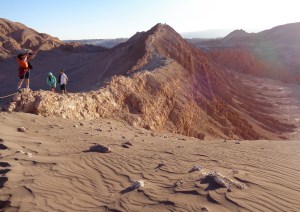How can we include people without vision in the visual arts? A collaboration between the Queensland University of Technology’s Design Lab and Art Museum decided to find out. The result was a co-designed inclusive visual art project titled Vis-ability.

The Vis-ability project pushed the boundaries of universal design to discover multi-sensory experiences.
Equal access to art and cultural heritage remains limited. As a consequence, it privileges people with sight. Cultural institutions are a draw for tourists, but few are considering equitable access to exhibits.
A team of 35 researchers and people with lived experience of blindness or low vision, co-designed 12 outputs. The process proposed alternative ways of engaging with the art collection and expanding understanding of visual art.


The project emerged from Janice Rieger’s conversations with people who are blind. They found it was pointless going to an art gallery or museum because they were told that “art is only for the sighted”.
The Vis-ability exhibition opened in April 2019 at the QUT Art Museum. Visitors had the opportunity to experience tactile models and audio descriptions of selected works on display. Visitors were encouraged to think about senses other than sight when engaging with the artwork. More in-depth understanding of the works added a new dimension to the experience of art. Audio pods concealed the paintings so that all visitors would have to ‘hear the painting‘ before seeing it.
When you went into the exhibition you could see the paintings, you could touch the paintings, and you could hear the paintings. Even people who consider themselves able bodied appreciated that.
Prof Janice Rieger
The Vis-ability exhibition was co-designed with people with disability and reached an audience of 4 million globally. Funding for the project came from the EU Commission and in-kind support from institutions in Canada and Australia.
The title of the short paper by Janice Rieger is, Vis-ability: Design Cultures of Inclusion in Australia and Globally.
Editor’s comment
I was lucky to be involved in the early stages of this project. I joined a workshop where different groups attempted to interpret a painting by creating a tactile model using paper, glue and an any other materials available. The process of creating the model was a learning exercise for everyone involved.
Touching artworks in regular art galleries is forbidden, but in this instance, tactile experiences were encouraged. This added another dimension for people who are sighted. As with many things designed for a particular disability, it turned out good for everyone – yes, universal design!
The top picture was taken during a workshop session. It shows Prof Megan Strickfadden, a co-researcher, audio describing a painting.






 Reading is a skill that some people find difficult or onerous, so they miss out on reading for pleasure. But making books more accessible is more than just applying Easy Language. It also requires thoughtful layout, font and use of images. The Books for Everyone Framework describes the book making process from writing to publication.
Reading is a skill that some people find difficult or onerous, so they miss out on reading for pleasure. But making books more accessible is more than just applying Easy Language. It also requires thoughtful layout, font and use of images. The Books for Everyone Framework describes the book making process from writing to publication.  The Kelpies are 30 metre-high horse-head sculptures in a new parkland area near Falkirk, Scotland. The project connects 16 communities in the council area and the Clyde Canal. The sculptures attract many visitors to The Helix site and the whole project was designed with access and inclusion in mind. This is apparent in the Access Statement for the Kelpies – a good guide for all visitors. And a good example for others devising a similar guide.
The Kelpies are 30 metre-high horse-head sculptures in a new parkland area near Falkirk, Scotland. The project connects 16 communities in the council area and the Clyde Canal. The sculptures attract many visitors to The Helix site and the whole project was designed with access and inclusion in mind. This is apparent in the Access Statement for the Kelpies – a good guide for all visitors. And a good example for others devising a similar guide.



 Lookout towers are usually built with steps, so how can you make them accessible? The answer is of course a ramp, but not just any ramp. The Stovner Tower in Oslo shows how you can create a beautiful walkway with universal design. It curves and loops for 260 metres until it reaches 15 metres above ground. This provides excellent views of the city and landscape beyond. Located on the forest edge it is a destination for everyone to enjoy.
Lookout towers are usually built with steps, so how can you make them accessible? The answer is of course a ramp, but not just any ramp. The Stovner Tower in Oslo shows how you can create a beautiful walkway with universal design. It curves and loops for 260 metres until it reaches 15 metres above ground. This provides excellent views of the city and landscape beyond. Located on the forest edge it is a destination for everyone to enjoy. The tower has become a popular destination for both locals and visitors.
The tower has become a popular destination for both locals and visitors. 

 Are high rise developments good for children? This is the key question in
Are high rise developments good for children? This is the key question in